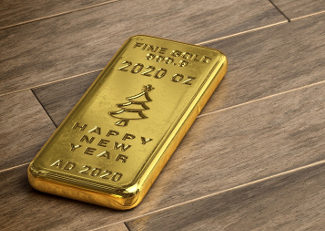Fearful of Global Economic Decline, Rothschilds Shift to Gold
Lord Rothschild, distinguished investment banker and chairman of the three-billion-pound Rothschild Investment Trust, has informed shareholders of a major financial decision. He has substantially reduced the Trust’s percentage of stocks, and switched much of its paper assets to gold.
To call Lord Rothschild a seasoned investor would be a serious understatement. The Right Hon. Nathaniel Charles Jacob Rothschild, 4th Baron Rothschild, Bt.,OM, GBE, FBA, comes from a banking family that can trace its roots to 1577, and its professional direction to the birth of Mayer Amschel Rothschild in Frankfurt am Main in 1744, son of a money changer who had traded with the Prince of Hesse.
The Rothschilds’ wealth has survived through at least two centuries because family members learned early to diversify assets and place them strategically in different countries in the form of stocks, bonds, and debts.
But the Rothschilds are no strangers to gold. In 1919, the daily gold fix (the day’s setting of the gold price) began on the premises of Nathan Mayer Rothschild & Sons. Although the firm sold its spot at the gold fix table to Barclays in 2004, it’s clear from Lord Rothschild’s current announcement the family continues to understand the nature and value of gold.
In his message to shareholders, Lord Rothschild attributed much of his decision to invest a portion of the family fortune in gold to the “greatest experiment in monetary policy in the history of the world.” His decision to invest in gold became crystal clear when he expressed concern over extremely low interest rates, and thirty percent of government debt (bonds) at negative yields. And Rothschild is obviously disenchanted with “quantitative easing on a massive scale.”
He seems obviously attuned to the analysis of economists like Lawrence Summers and Marc Faber in their discussions of a weak global economy and secular stagnation. So when Lord Rothschild invests a portion of his family’s three-billion-pound Investment Trust in gold, he does so from a sense of urgency and despair over the current financial landscape. He’s concerned over the effects of Brexit, the slowdown of the economy in China, the conflict in the Middle East, and terrorist attacks in France, Germany, and the United States.
What’s utmost in Lord Rothschild’s thinking is the preservation of capital. It comes down to Mark Twain’s adage: “It’s not return on my money I’m interested in, it’s return of my money.” It’s foolish to take chances with money. But it’s sheer madness to take chances with big money.
What’s also telling in Lord Rothschild’s message to shareholders is his careful use of a word common among traders and professional investors, “exposure.” By reducing the concentration of equities and increasing the concentration of gold in the Investment Trust, Rothschild is also reducing its exposure to risk and to destructive central bank policies.
Certainly all of us can learn from the Rothschild example. We’re not in an economy with classical business cycles that move from boom to bust and back. Rather than wait for better times, we need to make smarter investments. We need to reduce our own exposure. Lord Rothschild picked gold for a reason, and that was because it protected him, his family’s trust, and his shareholders from risk. Unlike some things only the wealthy have access to, this is one smart stratagem you can employ yourself.
Physical gold is a tangible asset that holds its value over the long haul. And with a proven, strong demand that’s driving its price higher, it’s a formidable counter-balance to shaky paper assets and a vulnerable dollar.

